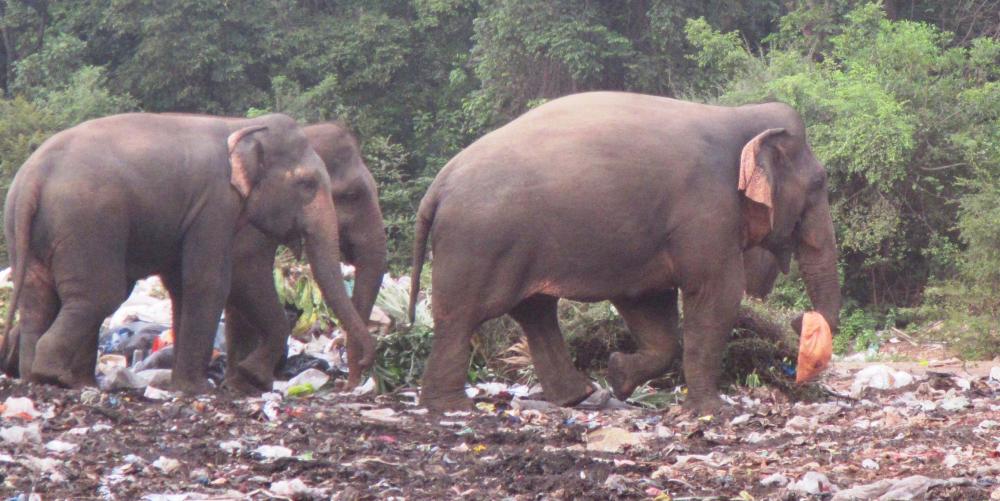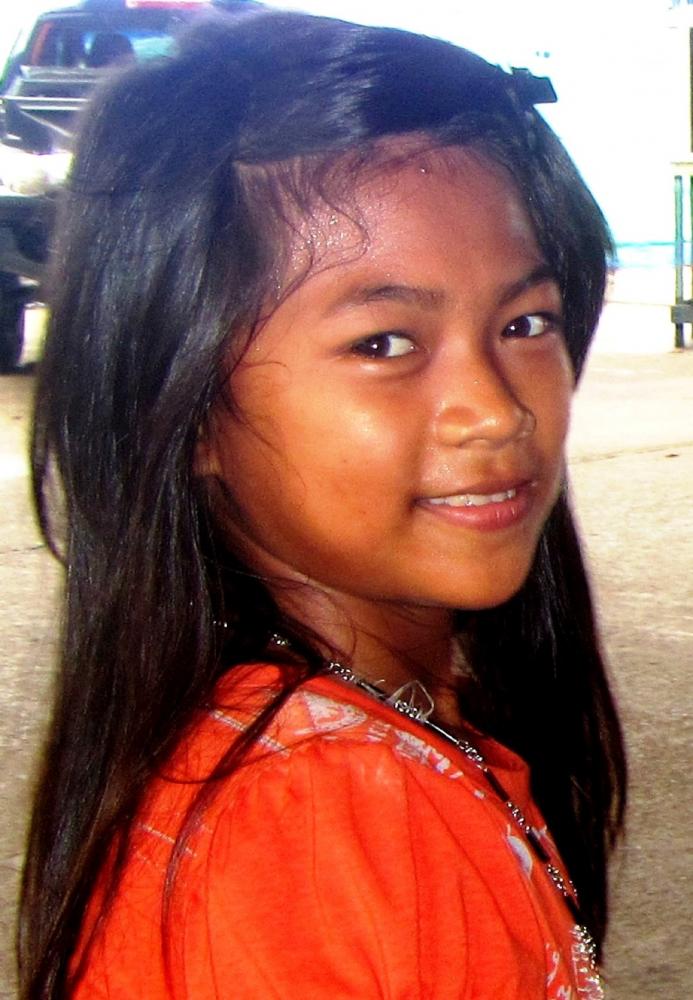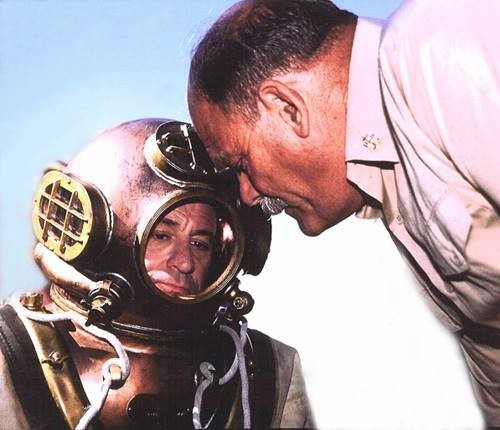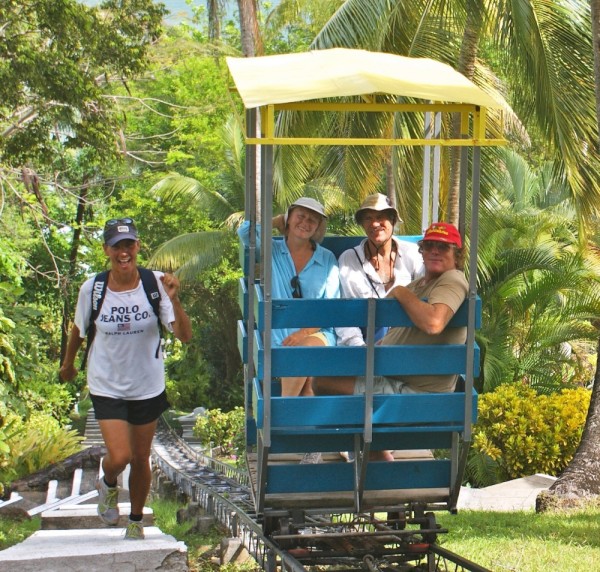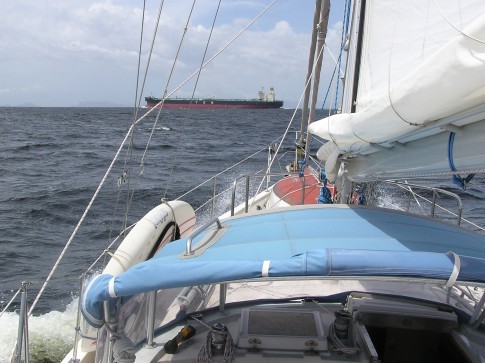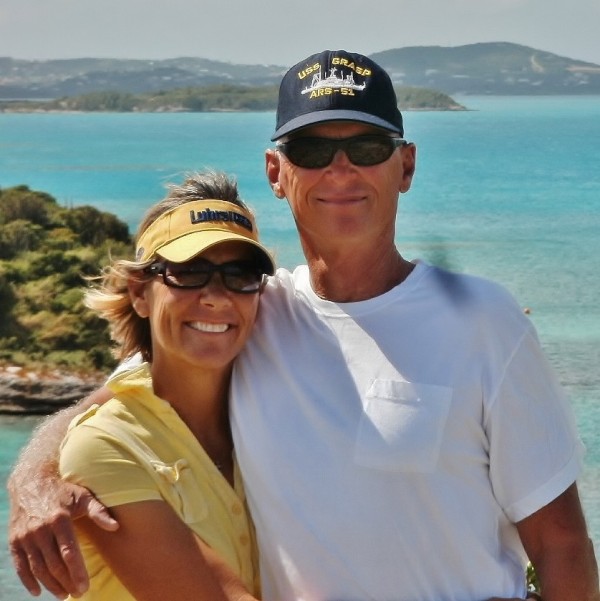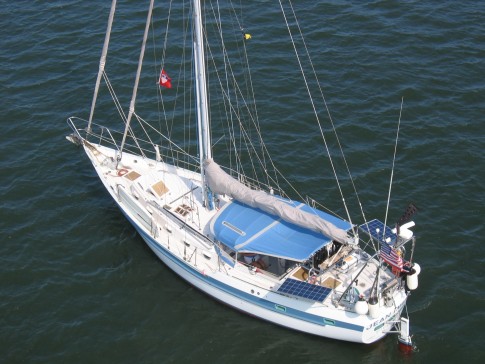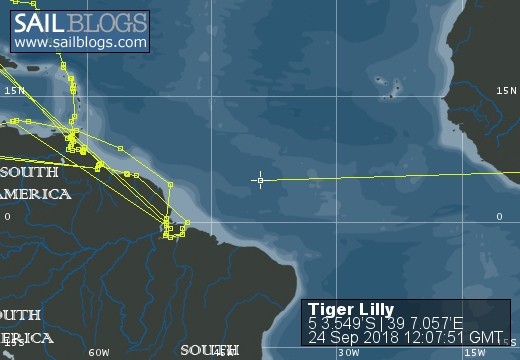
S/V Tiger Lilly
Rig heavy, reef early, and pray often; for God does not assure us an easy passage, but He does promise a safe anchorage...
25 May 2018 | TRINCOMALEE, SRI LANKA
02 January 2018 | Clan Jeti Anchorage, Georgetown, Penang Island, Malaysia
03 November 2016 | Singapore, Southeast Asia
02 October 2016 | Kumai River, Borneo
24 August 2016 | Rindja Island, Indonesia
22 July 2016 | Fannie Bay, Darwin, Northern Territory, Australia
14 June 2016 | Pancake Creek, Queensland, Australia
13 June 2016 | Pancake Creek, Queensland, Australia
11 June 2016 | Burnette Heads, Queensland, Australia
07 June 2016 | Mooloolaba, Queensland, Australia
11 May 2016 | Colmsie, Brisbane River, Queensland, Australia
23 December 2015 | Brisbane, Australia
13 August 2015 | Whangarei, New Zealand
07 August 2015 | Whangarei, New Zealand
23 July 2015 | Whangarei, New Zealand
12 April 2015 | Whangarei, New Zealand
11 February 2015 | Whangarei, New Zealand
25 January 2015 | Whangarei, New Zealand
24 September 2014 | BORA BORA, French Polynesia
23 September 2014 | Bora Bora
TIGER LILLY - JAVA MAN
22 July 2013 | Sainte-Laurent Du Maroni, French Guyana
Tom and Lilly
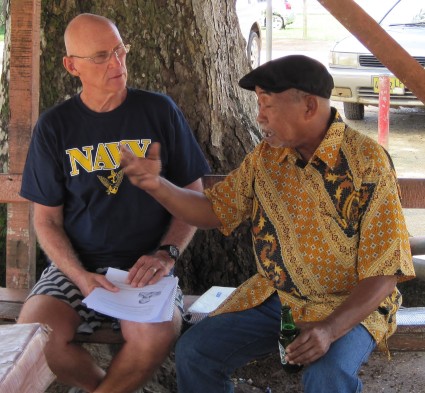
In 1863 when slavery was abolished in Holland and her Dutch colonies, the African slaves understandably refused to continue working the fields for their previous masters. Paid or not, they would never again work for the cruel masters who tortured, starved, and separated them from their families and homeland. But who would tend the tens of thousands of acres of sugar cane, coffee, and cocoa on the plantations of Dutch Guiana? The Dutch West India Company's labor dilemma was solved by transporting indentured servants from the Spice Island of Java in the Indian Ocean, which was administered by The Dutch East India Company. Destitute Hindustani Javanese, with little hope for even the basic needs of life, agreed to be transported to Dutch Guiana and be indentured for a period of 5 years to the colonial plantations of northeastern South America. At the end of their contracted labor they had the choice of either being returned to their homeland, or paid 100 Dutch Guilders and granted title to a plot of land in Dutch Guiana - modern day Suriname. Few returned to Java, and the largest population of Hindustani Javanese outside of Indonesia developed in Suriname. In fact, the first person we met in Suriname, Officer Gerrit Djaswadi of the Marine Police who boarded us as we entered the Suriname River, greeted us with a huge Javanese smile, a friendly handshake, and a hearty "Welkom to Suriname!" As we got to know Suriname and observed the people and the land (and, of course, their watercraft), a strong similarity to Southeast Asia was quite evident.
Suriname has a very diverse population made up principally of: Amerindians, the original inhabitants of northeastern South America; descendants of the African slaves; Creoles, of African and Dutch descent; Maroons, descendants of African slaves who escaped to the bush; East Indians, from India; Chinese, differentiated by "old" pre-independence Chinese, and the "new" Chinese who came to Suriname after the mid-70's; Caucasians, mostly Dutch which are further separated into Colonial Dutch and post-independence Dutch ; and the Hindustani Javanese. Importantly, no single culture is large enough to dominate the country. The Dutch language is commonly spoken by the people, is taught in school, and is the official language of Suriname; but Talkie-Talkie (a mixture of several languages based on the way the early white settlers spoke with the Amerindians, and the African slaves) is a universal way to communicate in the Guianas. However, speaking only English, the crew of Tiger Lilly was always able to figure out how to make friends or conduct our business - we found the Surinamese people to be helpful, yet reserved. (When Cyclone Lilly roared ashore with her gregarious personality and a copy of "How to Win Friends and Influence People" in her back pocket, the reserved Surinamese were initially taken aback - until she wrapped her heart and arms around them.) Suriname's multi-faceted population of only 560,000 people is 15% Hindustani Javanese. Although the country had a politically bumpy road after independence, the citizens of Suriname are quite proud of the peaceful way they live together today in pluralism - they appreciate each other's faith and accept their differences. (We were pleasantly surprised at the number of people wearing "I LUV SU" tee shirts - they take great pride in the country they have grown to be.) In downtown Paramaribo a Jewish temple is located right next door to a Muslim mosque, and as we rode through the countryside we saw Hindu temples across the road from the local Islamic community center. Hindu prayer flags are prominently flown in front of many homes in the Domburg area, while the Muslim crescent and star are displayed on the gate at their neighbors - we could all learn a thing or two about living together peacefully from the little country of Suriname.
Lilly's nephew Brian is currently serving in the Peace Corps as an educational consultant and teacher on the Indonesian island of Madura, just east of Java - and we are so very proud of the important work he is doing. This Blog is dedicated to Brian Mintey, and all the Peace Corps volunteers serving around the world. Brian saw by our blog that we were in Suriname, and he emailed questions to us regarding changes the Javanese language and culture have undergone in Suriname in the many years the people have been away from their mother country. We had absolutely no idea how to answer the questions of this highly educated and inquisitive young Peace Corps volunteer. We asked our Dutch-Surinamese friend Frederick, who owns a restaurant at Domburg Landing, who we might contact to answer Brian's questions. He smiled and responded that he had just the very person for us - Mr. Sapto Sopawiro, a teacher of Javanese culture at the Anton de Kom University in the capital city of Paramaribo.
It seems that the 73 year-old Sapto lives in Domburg and comes to the landing each morning to buy his newspaper, and discuss the affairs of the day with his Javanese buddies. We struck gold when we met Sapto. As a young man of 19 he joined the Dutch Merchant Marine and was trained as a ship's engineer. By the age of 22 he had a new baby and a wife who wanted him home from the sea, and his mechanical skills were needed in the developing bauxite industry back in Dutch Guiana. A family man, Sapto and his wife of 50 years, have 3 children, and several grandchildren. He is, in many ways, a self-taught man. As a repairman at the Billington bauxite mine in Suriname's interior, he spent many, many hours of his off-duty time studying the language, history, and culture of his Javanese ancestors - not the usual past time of a heavy-equipment mechanic. He was passionate about the pursuit of his education, his ancestry and his spiritual beliefs. After he retired from repairing the huge machines that mine bauxite ore, he studied at the Netherlands Institute of Southeast Asian and Caribbean Studies in Amsterdam. As a university teacher in Paramaribo, and the host of a popular TV program "Gumelaring Jagad" (The World Miscellany), Sapto is a prominent citizen in Suriname. Under challenging circumstances he has taught himself how to use his head, work with his hands, and open his heart; kind of a cross between Abraham Lincoln and Mahatma Gandhi. When we met him he had just returned from Yogyakarta, Indonesia, located on the big island of Java, where he was reunited with his relatives and participated in a cultural exchange program. (Interestingly, we received an email from Nephew Brian earlier this year telling us how much he enjoyed chaperoning a Senior Class graduation trip from his small village on Madura Island to the big city and cultural center of Yogyakarta - it seems Brian and Sapto were there just about the same time. Additionally, Tom and Sapto share the same birthday of 15 July - 7 years apart. The connection between Brian, Sapto, and Tiger Lilly was pre-made half-way around the globe while we were beating down the South American coast from Guyana to Suriname. Small world - isn't it? Folks, there are no coincidences - and the longer we live, it appears to us that very little happens by chance!) Sapto understood the nature of Brian's questions - he knew much about the current differences between the Javanese Hindustani people in Java and the Javanese Diaspora in Suriname, and they have exchanged email addresses for future discussions. Sapto's spiritual faith, the Kejawen mysticism, is based on the Hindu religion, which is being pushed out of his ancestral Java homeland by the Muslim majority - a religious intolerance all too common in Islam. When he travelled to Indonesia Sapto brought a message of tolerance and unity from the diverse cultures and people of Suriname. Sapto is a qualified spiritual teacher of the Kejawen mysticism, and he is currently the only person in Suriname capable of presenting the Ketoprak Tobong (stories derived from Hindu epics Ramayana and Mahabharata to present moral teachings as a guide to life). Each September he leads his country in the Kejawen rituals of Thanksgiving. Sapto is an expert wayang kulit - a Puppet Master; his traditional puppets are made from water buffalo leather, and presented from below the stage on banana sticks. Wayang kulit puppetry has been declared a World Cultural Heritage by UNESCO. He teaches the Surinamese people the Kejawen principles through Kepoprak Tobang - utilizing over 100 hand-made puppets accompanied by traditional Hindustani Javanese music and songs. Sapto has a beautiful voice, and he sang some of the songs for us. He understands the Javanese culture inside and out, but he is also a grandfather; he knows that in order to keep young people interested in learning the old traditions he needs a fresh innovative approach - so he sings the words of the old songs set to modern tunes which today's Surinamese youth recognize. Young at heart, and strong in his faith, Sapto is an inspiration to people of all ages.
Sadly, Sapto's puppet art, his religion, and his culture are dying in an increasingly secular Suriname. The acceptance by young people of the moralistic values of his Kejawen spirituality is waning as the youth of Suriname become less willing to devote the many hours of disciplined study necessary to learn the wayang kulit skills, and are more attracted to the modern thug media - and its message of instant gratification. (Lilly shouted at a passing youth: Pull up your flippin pants buddy! And Sapto nodded in agreement.) Under the pressure of Islam in Java, and secularism in Suriname, Sapto's Kejawen mysticism is being eclipsed. We are both grateful and privileged to have spent a most enjoyable morning under one of Domburg Landing's huge "Old Grandfather" shade trees interviewing this gentle spiritual leader and Puppet Master, Mr. Sapto Sopawiro - a national treasure of Suriname.
Usually, the initial reaction to informing our family or earth friends that we are in Suriname is a short thoughtful pause as they think "Just where the heck is Suriname?" We hope this little blog helps you understand not only where this tropical salad bowl of cultures is geographically located, but also gives you just a bit of insight into who these gentile folks are. Our wish is that you too will get the chance to visit Suriname, and come ashore at Domburg Landing; and if you do, seek out the Javanese professor with the broad smile and twinkling eyes. Share the cool shade and the morning breeze with friend Sapto - he will surely put a smile on your face and lift your spirit. While cruising aboard Tiger Lilly, the extraordinary people we meet, and the wonderful sights we see, are a joy to behold!
We have posted several pictures (with captions) of our visit to Suriname in the PICTURE GALLERY on this blog. If you click on the PICTURE GALLERY hyperlink in the upper right corner of this page, and follow the logic tree: Main / Ports of Call / South America / Suriname, you will soon be cruising up the Suriname River with Tiger Lilly. See you there!
Suriname has a very diverse population made up principally of: Amerindians, the original inhabitants of northeastern South America; descendants of the African slaves; Creoles, of African and Dutch descent; Maroons, descendants of African slaves who escaped to the bush; East Indians, from India; Chinese, differentiated by "old" pre-independence Chinese, and the "new" Chinese who came to Suriname after the mid-70's; Caucasians, mostly Dutch which are further separated into Colonial Dutch and post-independence Dutch ; and the Hindustani Javanese. Importantly, no single culture is large enough to dominate the country. The Dutch language is commonly spoken by the people, is taught in school, and is the official language of Suriname; but Talkie-Talkie (a mixture of several languages based on the way the early white settlers spoke with the Amerindians, and the African slaves) is a universal way to communicate in the Guianas. However, speaking only English, the crew of Tiger Lilly was always able to figure out how to make friends or conduct our business - we found the Surinamese people to be helpful, yet reserved. (When Cyclone Lilly roared ashore with her gregarious personality and a copy of "How to Win Friends and Influence People" in her back pocket, the reserved Surinamese were initially taken aback - until she wrapped her heart and arms around them.) Suriname's multi-faceted population of only 560,000 people is 15% Hindustani Javanese. Although the country had a politically bumpy road after independence, the citizens of Suriname are quite proud of the peaceful way they live together today in pluralism - they appreciate each other's faith and accept their differences. (We were pleasantly surprised at the number of people wearing "I LUV SU" tee shirts - they take great pride in the country they have grown to be.) In downtown Paramaribo a Jewish temple is located right next door to a Muslim mosque, and as we rode through the countryside we saw Hindu temples across the road from the local Islamic community center. Hindu prayer flags are prominently flown in front of many homes in the Domburg area, while the Muslim crescent and star are displayed on the gate at their neighbors - we could all learn a thing or two about living together peacefully from the little country of Suriname.
Lilly's nephew Brian is currently serving in the Peace Corps as an educational consultant and teacher on the Indonesian island of Madura, just east of Java - and we are so very proud of the important work he is doing. This Blog is dedicated to Brian Mintey, and all the Peace Corps volunteers serving around the world. Brian saw by our blog that we were in Suriname, and he emailed questions to us regarding changes the Javanese language and culture have undergone in Suriname in the many years the people have been away from their mother country. We had absolutely no idea how to answer the questions of this highly educated and inquisitive young Peace Corps volunteer. We asked our Dutch-Surinamese friend Frederick, who owns a restaurant at Domburg Landing, who we might contact to answer Brian's questions. He smiled and responded that he had just the very person for us - Mr. Sapto Sopawiro, a teacher of Javanese culture at the Anton de Kom University in the capital city of Paramaribo.
It seems that the 73 year-old Sapto lives in Domburg and comes to the landing each morning to buy his newspaper, and discuss the affairs of the day with his Javanese buddies. We struck gold when we met Sapto. As a young man of 19 he joined the Dutch Merchant Marine and was trained as a ship's engineer. By the age of 22 he had a new baby and a wife who wanted him home from the sea, and his mechanical skills were needed in the developing bauxite industry back in Dutch Guiana. A family man, Sapto and his wife of 50 years, have 3 children, and several grandchildren. He is, in many ways, a self-taught man. As a repairman at the Billington bauxite mine in Suriname's interior, he spent many, many hours of his off-duty time studying the language, history, and culture of his Javanese ancestors - not the usual past time of a heavy-equipment mechanic. He was passionate about the pursuit of his education, his ancestry and his spiritual beliefs. After he retired from repairing the huge machines that mine bauxite ore, he studied at the Netherlands Institute of Southeast Asian and Caribbean Studies in Amsterdam. As a university teacher in Paramaribo, and the host of a popular TV program "Gumelaring Jagad" (The World Miscellany), Sapto is a prominent citizen in Suriname. Under challenging circumstances he has taught himself how to use his head, work with his hands, and open his heart; kind of a cross between Abraham Lincoln and Mahatma Gandhi. When we met him he had just returned from Yogyakarta, Indonesia, located on the big island of Java, where he was reunited with his relatives and participated in a cultural exchange program. (Interestingly, we received an email from Nephew Brian earlier this year telling us how much he enjoyed chaperoning a Senior Class graduation trip from his small village on Madura Island to the big city and cultural center of Yogyakarta - it seems Brian and Sapto were there just about the same time. Additionally, Tom and Sapto share the same birthday of 15 July - 7 years apart. The connection between Brian, Sapto, and Tiger Lilly was pre-made half-way around the globe while we were beating down the South American coast from Guyana to Suriname. Small world - isn't it? Folks, there are no coincidences - and the longer we live, it appears to us that very little happens by chance!) Sapto understood the nature of Brian's questions - he knew much about the current differences between the Javanese Hindustani people in Java and the Javanese Diaspora in Suriname, and they have exchanged email addresses for future discussions. Sapto's spiritual faith, the Kejawen mysticism, is based on the Hindu religion, which is being pushed out of his ancestral Java homeland by the Muslim majority - a religious intolerance all too common in Islam. When he travelled to Indonesia Sapto brought a message of tolerance and unity from the diverse cultures and people of Suriname. Sapto is a qualified spiritual teacher of the Kejawen mysticism, and he is currently the only person in Suriname capable of presenting the Ketoprak Tobong (stories derived from Hindu epics Ramayana and Mahabharata to present moral teachings as a guide to life). Each September he leads his country in the Kejawen rituals of Thanksgiving. Sapto is an expert wayang kulit - a Puppet Master; his traditional puppets are made from water buffalo leather, and presented from below the stage on banana sticks. Wayang kulit puppetry has been declared a World Cultural Heritage by UNESCO. He teaches the Surinamese people the Kejawen principles through Kepoprak Tobang - utilizing over 100 hand-made puppets accompanied by traditional Hindustani Javanese music and songs. Sapto has a beautiful voice, and he sang some of the songs for us. He understands the Javanese culture inside and out, but he is also a grandfather; he knows that in order to keep young people interested in learning the old traditions he needs a fresh innovative approach - so he sings the words of the old songs set to modern tunes which today's Surinamese youth recognize. Young at heart, and strong in his faith, Sapto is an inspiration to people of all ages.
Sadly, Sapto's puppet art, his religion, and his culture are dying in an increasingly secular Suriname. The acceptance by young people of the moralistic values of his Kejawen spirituality is waning as the youth of Suriname become less willing to devote the many hours of disciplined study necessary to learn the wayang kulit skills, and are more attracted to the modern thug media - and its message of instant gratification. (Lilly shouted at a passing youth: Pull up your flippin pants buddy! And Sapto nodded in agreement.) Under the pressure of Islam in Java, and secularism in Suriname, Sapto's Kejawen mysticism is being eclipsed. We are both grateful and privileged to have spent a most enjoyable morning under one of Domburg Landing's huge "Old Grandfather" shade trees interviewing this gentle spiritual leader and Puppet Master, Mr. Sapto Sopawiro - a national treasure of Suriname.
Usually, the initial reaction to informing our family or earth friends that we are in Suriname is a short thoughtful pause as they think "Just where the heck is Suriname?" We hope this little blog helps you understand not only where this tropical salad bowl of cultures is geographically located, but also gives you just a bit of insight into who these gentile folks are. Our wish is that you too will get the chance to visit Suriname, and come ashore at Domburg Landing; and if you do, seek out the Javanese professor with the broad smile and twinkling eyes. Share the cool shade and the morning breeze with friend Sapto - he will surely put a smile on your face and lift your spirit. While cruising aboard Tiger Lilly, the extraordinary people we meet, and the wonderful sights we see, are a joy to behold!
We have posted several pictures (with captions) of our visit to Suriname in the PICTURE GALLERY on this blog. If you click on the PICTURE GALLERY hyperlink in the upper right corner of this page, and follow the logic tree: Main / Ports of Call / South America / Suriname, you will soon be cruising up the Suriname River with Tiger Lilly. See you there!
Comments
| Vessel Name: | Tiger Lilly |
| Vessel Make/Model: | 1977 CSY44 walkover hull #55 |
| Hailing Port: | Green Cove Springs |
| Crew: | Lilly and Tom Service |
| About: | |
| Extra: | |
| Social: |
Tiger Lilly's Photos - Main
S/V Tiger Lilly
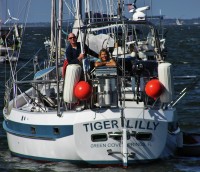
Who: Lilly and Tom Service
Port: Green Cove Springs

